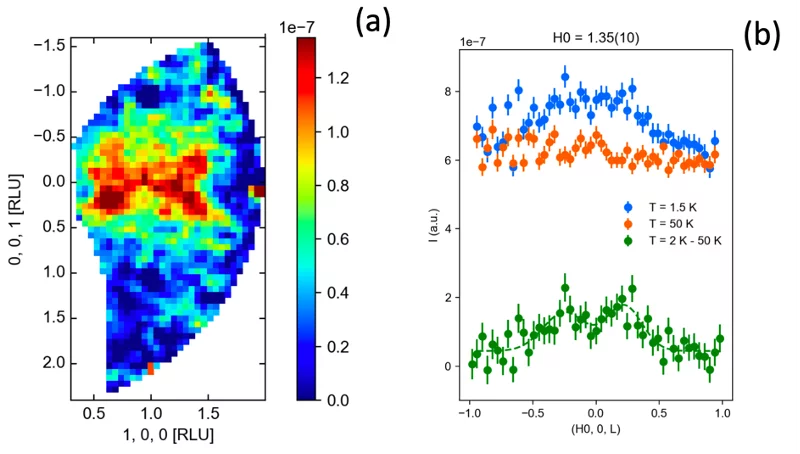A thermodynamic system of interacting particles assumes a variety of states of matter, ranging from different configurations in solids to liquids, gases or plasmas. They can transform among one another as the external conditions alternate, such as a solid that melts into a liquid at elevated temperature. The process is denoted as phase transition, and is driven by thermal or quantum mechanical fluctuations. The latter fluctuations are particularly interesting, because they can trigger novel coherent states in solids that are potentially appealing for future technological applications. However, many of these quantum phenomena are not yet understood, and require detailed investigation. Particularly interesting are quantum spin liquid phases, which epitomize long-range quantum-entangled ground states with fluctuating magnetic moments down to lowest temperature. The metallic realization of the state of matter lacking to this date, but it has been proposed to arise from quantum critical fluctuations in frustrated metals.
Direct microscopic evidence of the novel phase is challenging, because the identifying excitations and quantum critical fluctuations feature the same energy scale. Thus, we need to understand how the two contributions can be disentangled. Most promising candidates are metals containing rare-earth elements where two antagonistic magnetic interactions are conducive to separate quantum phase transitions. The associated fluctuations are predicted to appear at specific places in reciprocal space, and should behave differently upon extrinsic parameters such as temperature, magnetic field and pressure. Thus, a microscopic investigation of the quantum critical fluctuations across metallic quantum phase transitions is required to gain insight into the macroscopically coherent phenomena.
In this project we want to make efficient progress towards the first experimental determination of a metallic quantum spin liquid phase. For this, we need to understand how coexisting interactions in so-called Kondo metals affect the quantum critical fluctuations, which is achieved by investigating materials that posses a multicomponent quantum phase transition. It is further crucial to establish how quantum fluctuations are affected by magnetic frustration, because only this insight will allow disentangling the quantum critical fluctuations from the quantum spin liquid excitations. Materials hosting quantum bicritical points are ideal model materials to separate these contributions as the emergence of a magnetic order parameter on either side of the quantum phase transition excludes the possibility of an emergent quantum spin liquid phase. The acquired knowledge from these two steps will be used to search for characteristic quantum spin liquid excitations in a Kondo metal.
Critical fluctuations can be probed by inelastic neutron scattering. They show an extended nature in reciprocal space, which requires neutron instrumentation that allows mapping of large areas in reciprocal space and energy under extreme conditions (see Fig. 1). Hitherto, this combination has been challenging for neutron instrumentation, but the novel generation of multiplexing instruments such as the Continuous Angle Multiple Energy Analysis (CAMEA) spectrometer at the Swiss Spallation Neutron Source (SINQ) of the Paul Scherrer Institut (PSI), Switzerland are built for this exact purpose. These developments provide the tools for a successful completion of the project.
Collaboration
- Oksana Zaharko, LNS/PSI
- Andrew Christianson, Oak Ridge National Laboratory, USA
- Paul Canfield, Ames Laboratory, USA
Funding
- SNSF Project No. 200021_200653
Associated junior researchers
- Open position (https://www.psi.ch/en/pa/job-opportunities/45329-phd-student)
